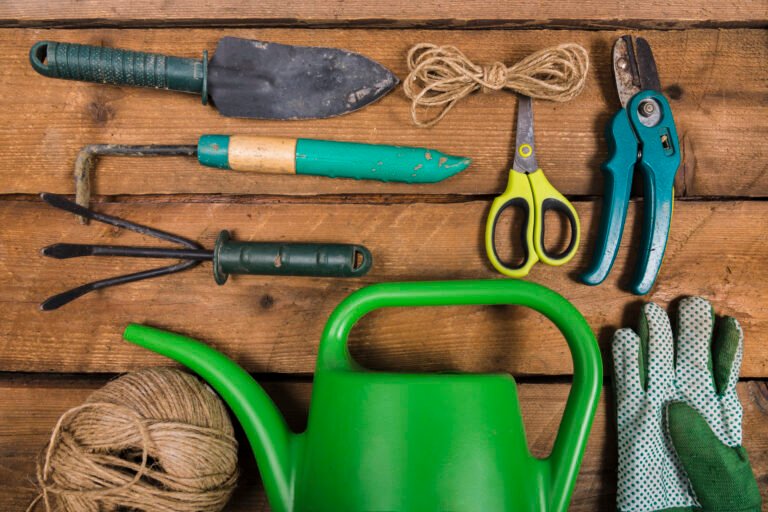Best Tips for Leaf Blowing and Choosing the Right Blower
It doesn’t matter if the goal is to sweep the walkway after mowing or clear fallen leaves—leaf blowing are powerful devices that do the job quickly. These machines come in various sizes and designs to meet almost any homeowner’s needs. Thanks to recent innovations, leaf blowers are becoming more efficient and quieter, which helps maintain good relations with neighbors. This guide will help you choose and use the right leaf blower safely and effectively.
Types of Leaf Blowers
Technology has advanced, offering a variety of leaf blowers, from gas-powered backpacks to battery-powered handheld models. Before purchasing a leaf blower, consider the important features in finding a model that suits your requirements.
Gas-Powered
Gas-powered leaf blowers come in two types: handheld and backpack models. Both provide significant power with 2-stroke engines. Handheld models are generally more comfortable for most users, while backpack models, though heavier, are more efficient. Some models combine a blower, vacuum, and leaf mulcher in one unit, making it easier to manage large areas.
Electric
Electric leaf blowers function similarly to gas-powered models but use a cord or battery as the power source. These are typically lighter and more portable. Battery-powered models may have limited runtime, but electric blowers are ideal for smaller gardens where quieter operation is preferred and range limitations are not a significant issue.
Best Times to Use a Leaf Blower
While local regulations may allow leaf blower use at various times, limiting use to appropriate hours is considerate to maintain good relations with neighbors.
Avoid using leaf blowers early in the morning or late at night. Many experts recommend starting yard work after 8 a.m. on weekdays and 9 a.m. on weekends. Consider what might disturb others and act accordingly to maintain a respectful neighborhood environment.
Additionally, check local rules to avoid violating noise ordinances. Many suburban areas have regulations prohibiting the use of loud equipment during specific hours, which can result in fines. Some communities also restrict or prohibit leaf blower use on Sundays, holidays, and other designated days.
Before moving to a new area, familiarize yourself with these guidelines and revisit them periodically, especially before using your leaf blower in the fall.
Select the Best Leaf Blower for Your Yard
Choosing the right leaf blower can be challenging with so many options available. Start by considering the size and layout of your yard and how many leaves typically fall during the season.
- Smaller Yards: If your yard is small or has minimal leaf accumulation, a less powerful model, or even a corded option, may suffice.
- Larger Yards: For bigger yards with more leaves, you’ll need a more powerful blower, such as a gas-powered or battery-powered model. Remember that larger blowers are more efficient but can also be heavier and harder to handle.
Plan Around Weather Conditions
Before starting, check the weather to ensure optimal conditions for leaf removal.
- Wait for calm or windless weather. If winds are blowing, use them to your advantage by working in the same direction as the wind. Avoid working on windy days, as it can be counterproductive.
- Whenever possible, let the leaves dry. Dry leaves are much easier to clear with a blower than wet ones. Test the moisture level by using the blower on a small pile. If the leaves don’t budge, wait for drier conditions.
Use the Right Technique
Efficient leaf blowing is all about method and planning.
- Decide where you want the leaves to collect. Lay a tarp at the collection point to move the leaves to a compost pile or disposal area easier.
- Work in sections if moving leaves to a compost pile or wooded area. Blow leaves toward the target area in manageable piles, tackling one section at a time.
- Stick to one direction to avoid blowing leaves back into areas you’ve already cleared.
- Hold the blower to your side, angling it slightly toward the ground. Use smooth, back-and-forth movements while walking slowly forward.
Following these steps can make leaf clearing quicker and more efficient.
How to Use Correctly
-
Check the Conditions
The first step is to check the weather conditions before using the leaf blower. Avoid blowing wet leaves after a rain or snowstorm, making the task harder and less effective. Using the blower during a storm or when strong winds are also not ideal. Wait for dry, calm weather to ensure the best results.
-
Wear Appropriate Safety Equipment
Before using a leaf blower, make sure to wear suitable safety gear. This includes eye protection, gardening gloves, a face mask, closed-toe shoes or protective clothing, and ear protection. Although leaf blowers seem simple, they are powerful machines that can cause injury from flying debris. Additionally, many blowers produce noise levels between 70 and 75 decibels, which can lead to hearing damage over time, so ear protection is important.
-
Prepare the Leaf Blower
Ensure that the leaf blower is ready for use. If it’s a cordless model, fully charge the battery or have a spare on hand. Some models come with two batteries for convenience. For gas-powered blowers, check that the fuel tank is filled and the oil level is sufficient before starting.
-
Clear the Outdoor Space
Before you begin blowing leaves, walk around your yard and remove any large branches, trash, or lawn ornaments that could get in the way. Moving garden furniture to a safer location may also be helpful to prevent it from being blown around.
-
Adjust the Power Settings
Adjust the blower’s airflow to the appropriate setting before directing it to the leaves. Low airflow might make it harder to move the leaves, so it’s best to create smaller piles rather than scattering them across the lawn. For tighter spaces, such as under hedges, using the blower in vacuum mode can be more effective than raking.
-
Use the ‘Leaf Blowing’ Method
Experts recommend starting at the perimeter of your yard and blowing the leaves toward the center. Hold the blower to your side and point the chute toward the ground at a slight angle. Direct the airflow beneath the leaves, not over them, and move the blower in a sweeping arc as you walk forward. This technique helps avoid blowing leaves back into areas you’ve already cleared.
-
Direct the Leaves to a Tarp
A highly effective way to gather leaves is by blowing them onto a large tarp. Once all the leaves are collected, fold the corners of the tarp and tie the edges together. This method makes transporting the leaves to the compost pile or for disposal easier. Professional landscapers often use this technique for efficient leaf collection.
-
Clean and Store the Blower
After use, store the leaf blower in a clean, safe area. Hanging it on a hook in a shed or garage is a practical storage method that helps prevent wear and tear and reduces the risk of accidents from being left on the ground.
What to Do with Leaf Piles
After gathering the leaves into piles, several options exist for disposal or reuse.
Leaves make an excellent natural mulch. They provide valuable nutrients to ecosystems and help control weeds. In late fall, they can be spread over garden beds. In areas with substantial snow and rain, a 4—to 5-inch layer of leaf mulch can break down into soil within a single season.
Another option is to compost the leaves. Like mulching, fallen leaves are perfect for composting and can later be used to enrich garden soil.
Instead of bagging and disposing of leaves, you can use them as fillers in fall decorations. Leaf bags are available in various sizes and styles and they are suitable for most gardens.
If none of the above options are feasible, proper leaf disposal is essential. Many towns and cities advise against blowing leaves into streets or gutters, as this can clog stormwater drains and cause environmental issues. Contact your local waste management or government office to find the best method for leaf disposal.
Once you learn how to use leaf blowers effectively, managing fallen leaves and other yard maintenance tasks becomes much easier.
It’s important not only to choose the best time to use a leaf blower but also to follow a method that keeps you in good terms with your neighbors. Here are some additional tips:
Pick the Right Leaf Blower
The best leaf blower for your needs depends on your yard’s size, budget, and local regulations. Some areas prohibit gas-powered blowers or limit the decibel level of the blower’s sound.
Fortunately, electric blowers are now almost as powerful as gas blowers but without the noise and pollution. Highly efficient backpack blowers are also available, and even handheld options can work wonderfully.
Use Safely
If your neighbors are walking through your yard with their pets, turn off your leaf blower temporarily or aim it away from them.
Never leave the blower running when you’re not using it, and don’t use it to spread fertilizers or other landscaping chemicals. Instead, use a dedicated fertilizer spreader.
Blow Leaves Considerately
If the wind blows leaves into your neighbor’s yard, try to keep them on your own property.
“It’s different when a large number of leaves are intentionally blown into the neighbor’s yard compared to a few that end up there by accident,” notes an etiquette expert.
Additionally, some local regulations restrict blowing leaves into the street, as this can block drainage systems.
Reduce Noise
Some leaf blowers come with noise-reducing nozzles, and many are quieter when operated at a slower throttle speed. Regular maintenance, like cleaning the muffler and air filters, can also help reduce noise levels while operating the blower.
Alternatives to Leaf Blowing
Removing leaves from your yard helps maintain its neatness and prevents grass from being overrun. However, some experts recommend keeping fallen leaves in place to promote biodiversity.
But if you prefer to remove them and timing restrictions for leaf blowing make it difficult to complete the task. Or if you simply want to stay on good terms with your neighbors—there’s always the classic rake.
“The old rake gets the job done—and it’s a great workout,” one expert says. “Do it yourself, assign it as a chore for the kids, or hire a neighbor’s child to do it for a few dollars.”
If nothing else works, you might consider hiring a lawn contractor to remove the fallen leaves from your yard.
FAQs
What is the best method to blow leaves?
Always point the leaf blower nozzle downwards. The air is concentrated in a smaller area, giving you better control and accuracy. A slight angle will push the leaves forward instead of lifting them up. Keeping the blower close to the ground can also prevent dust from blowing into the air.
Are leaf blowers easy to use?
Cordless leaf blowers are modern, user-friendly tools that make keeping your lawn tidy easier while minimizing disturbance to neighbors. They’re quiet, lightweight, and simple to operate.
When is the best time to start blowing leaves?
Leaf blowers can be loud and disturb neighbors if used at inappropriate times, such as too early in the morning or too late at night. The best time to use a leaf blower is between 9 a.m. and 8 p.m. Also, ensure your leaves are dry—damp leaves are heavier and can stick to the ground, making them harder to blow away.
How do you begin using a leaf blower?
Hold the leaf blower with one hand. Pull the starter rope handle gradually until you feel resistance. Note: Do not pull the starter handle fully or release it too quickly. Pull the handle sharply until the engine starts or attempts to start, up to a maximum of six pulls.







